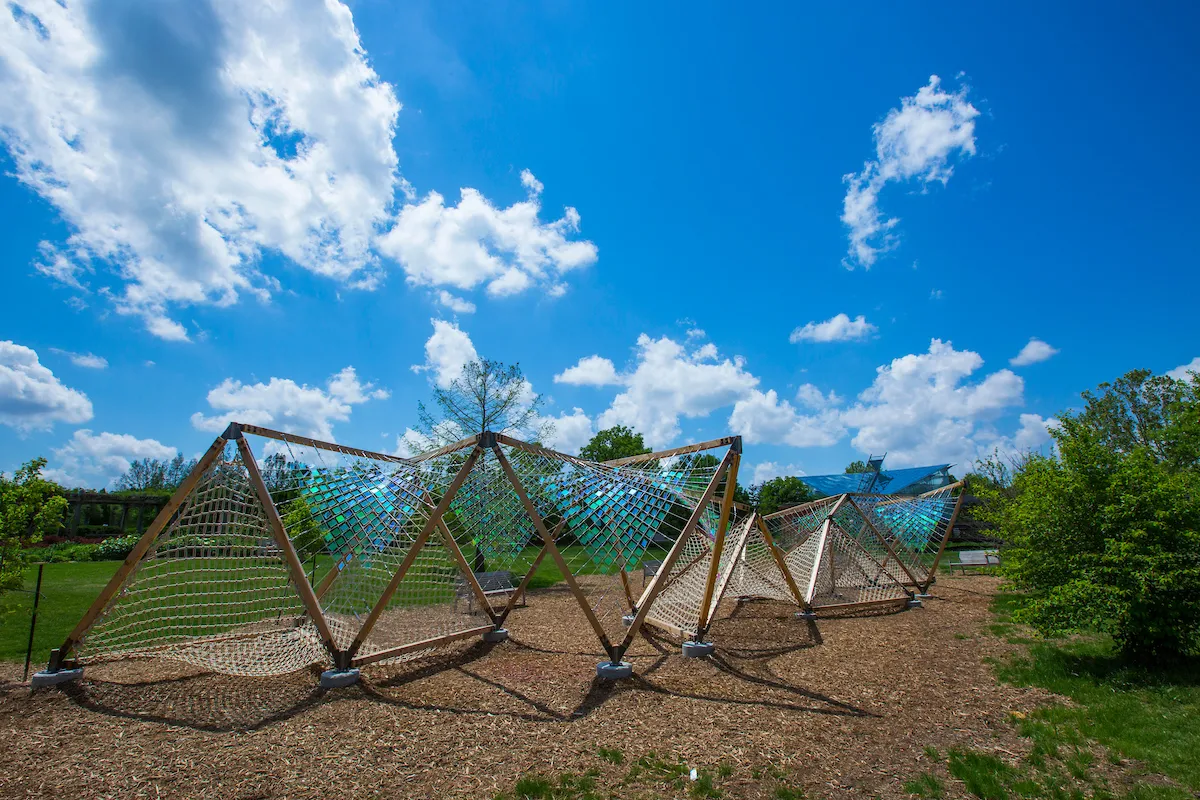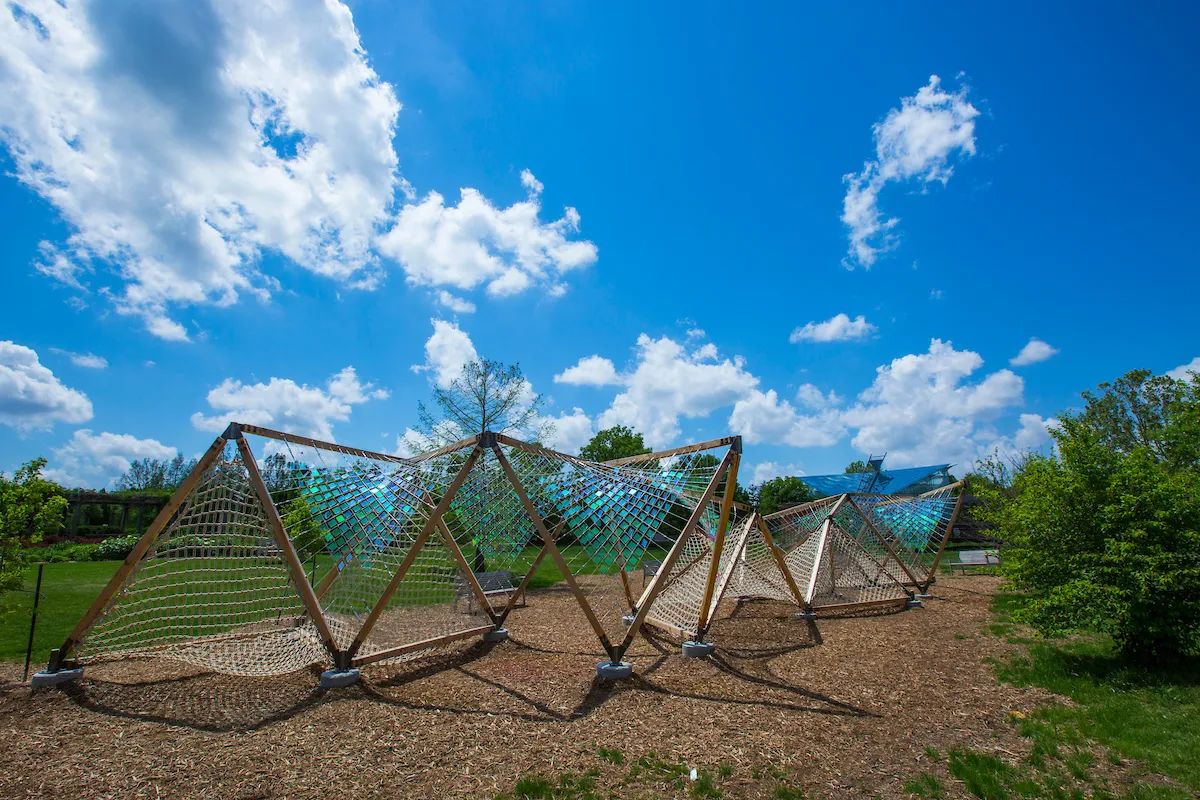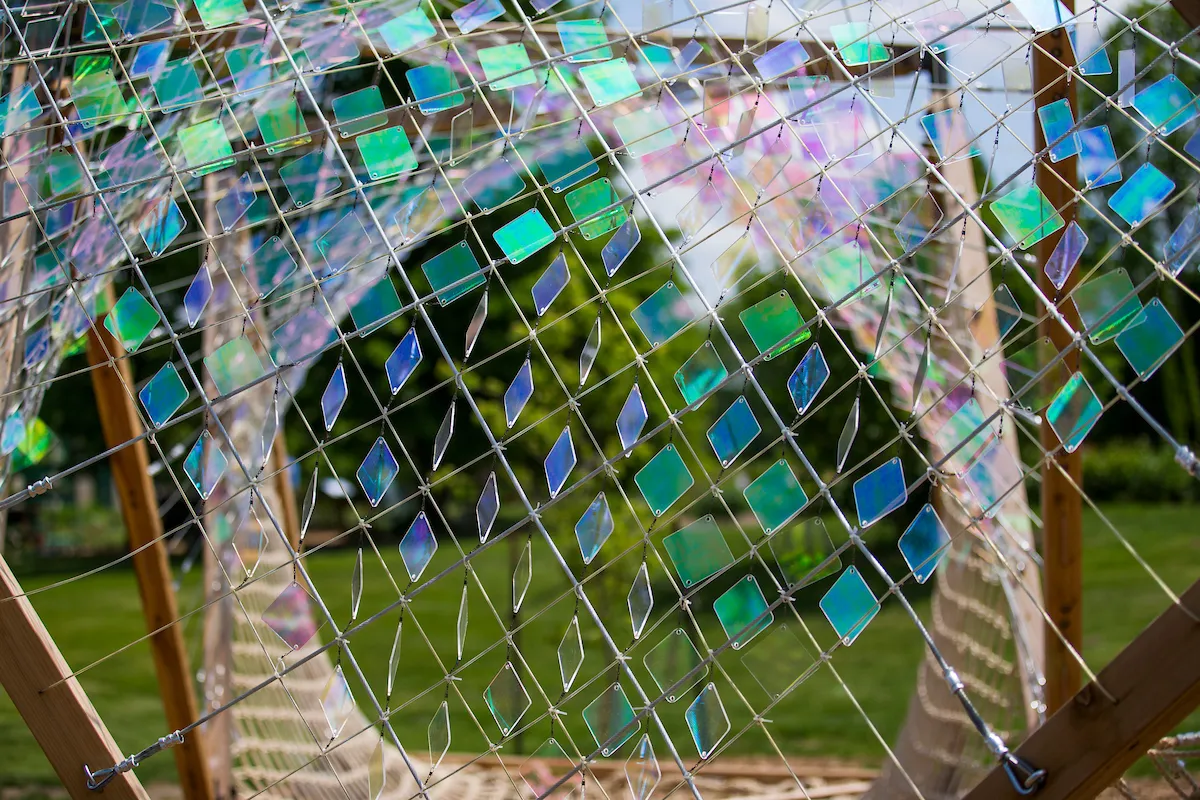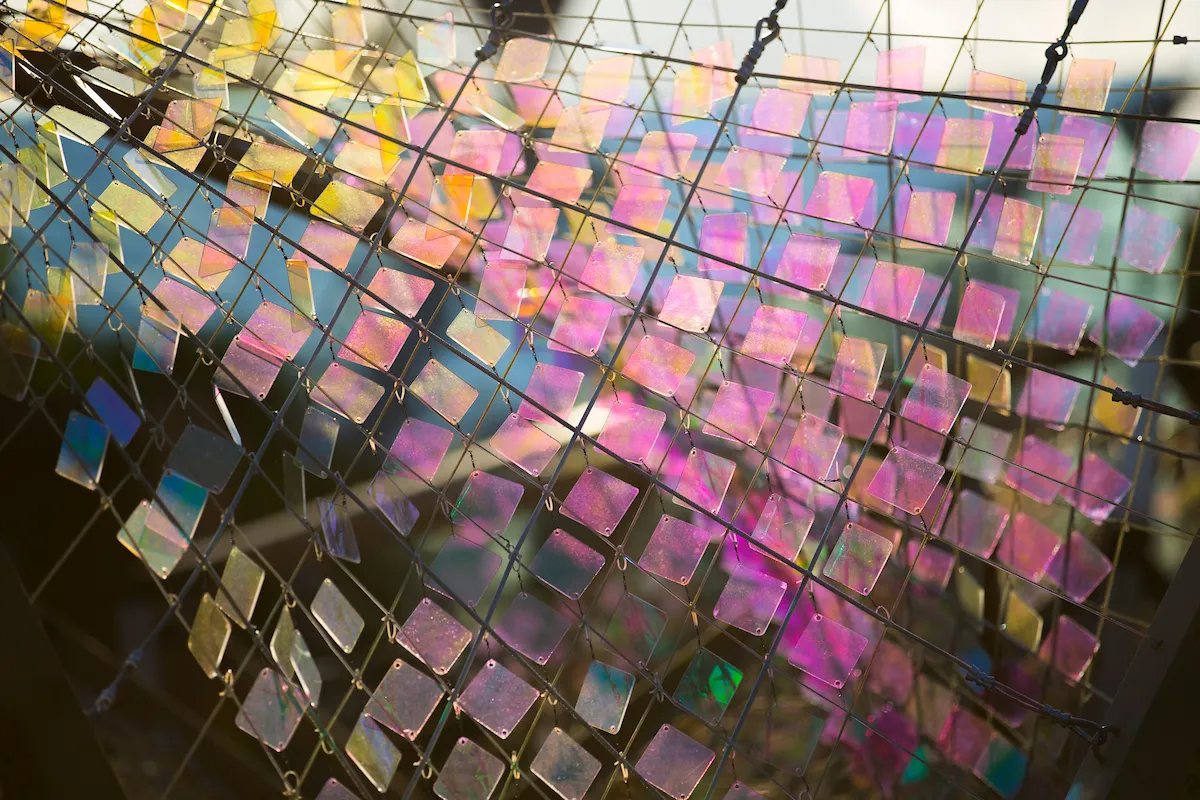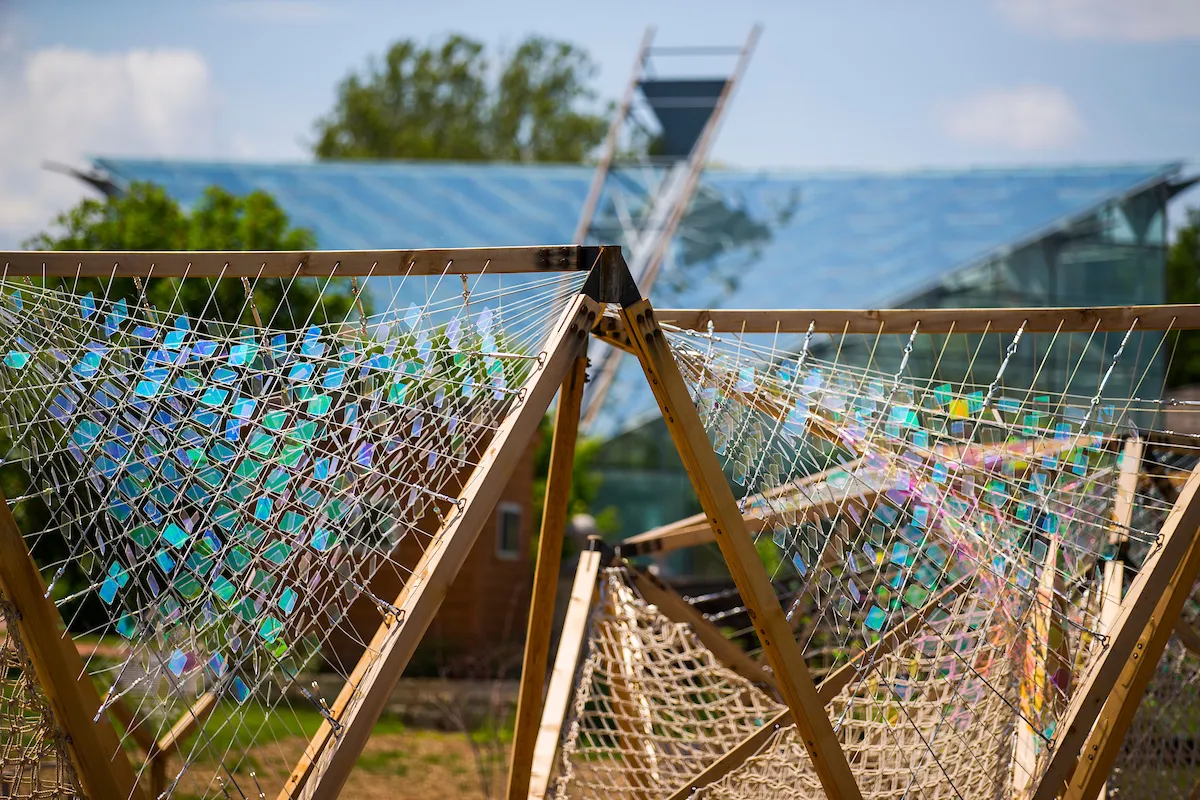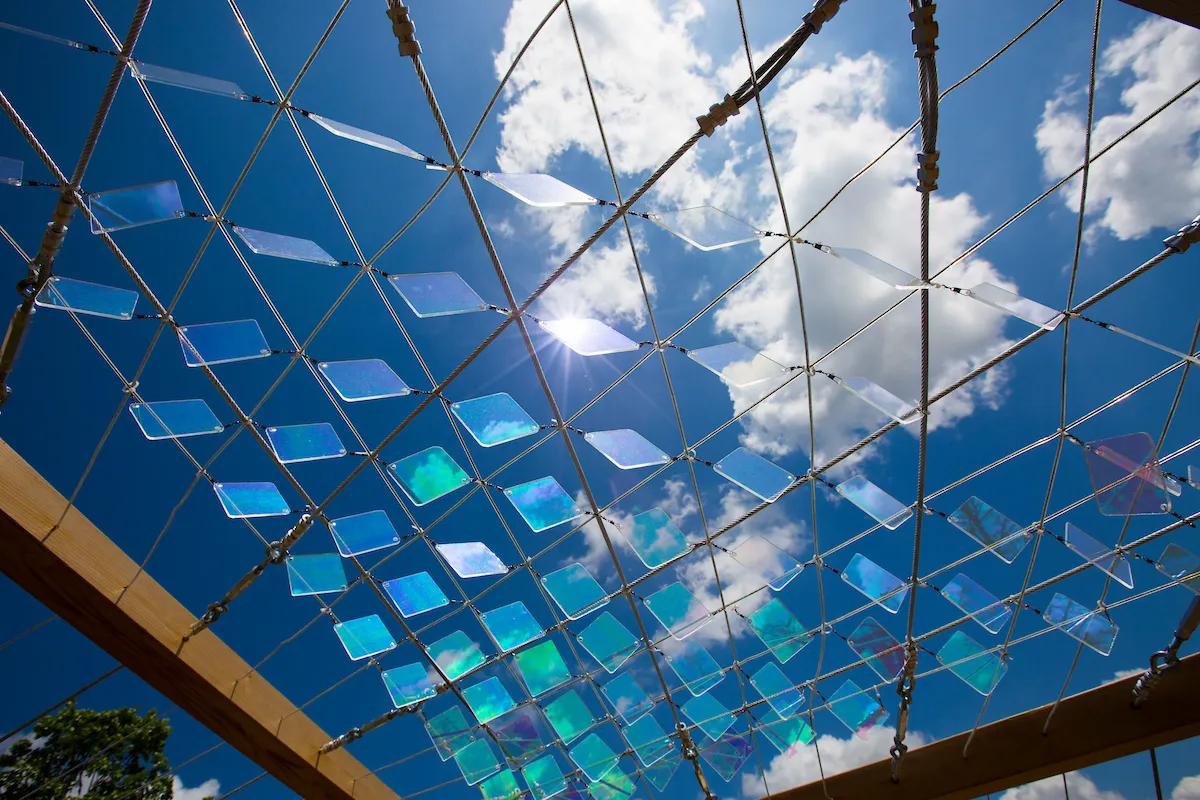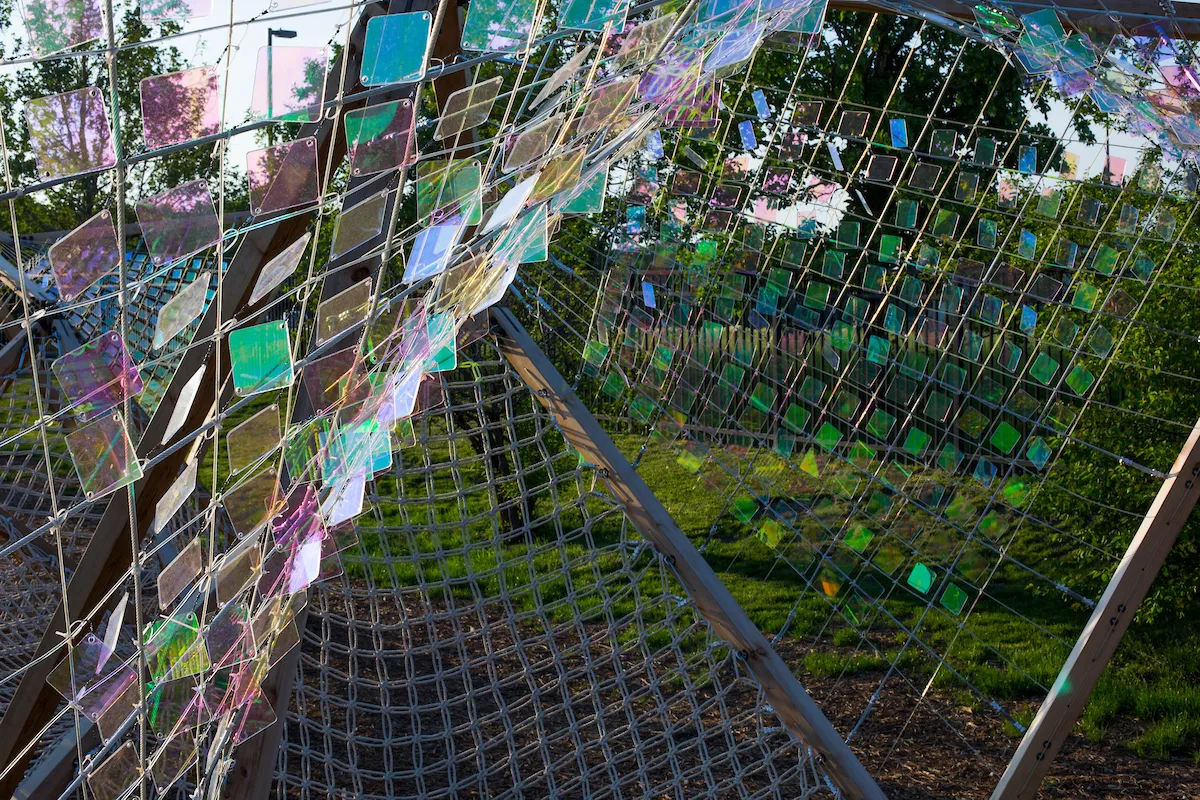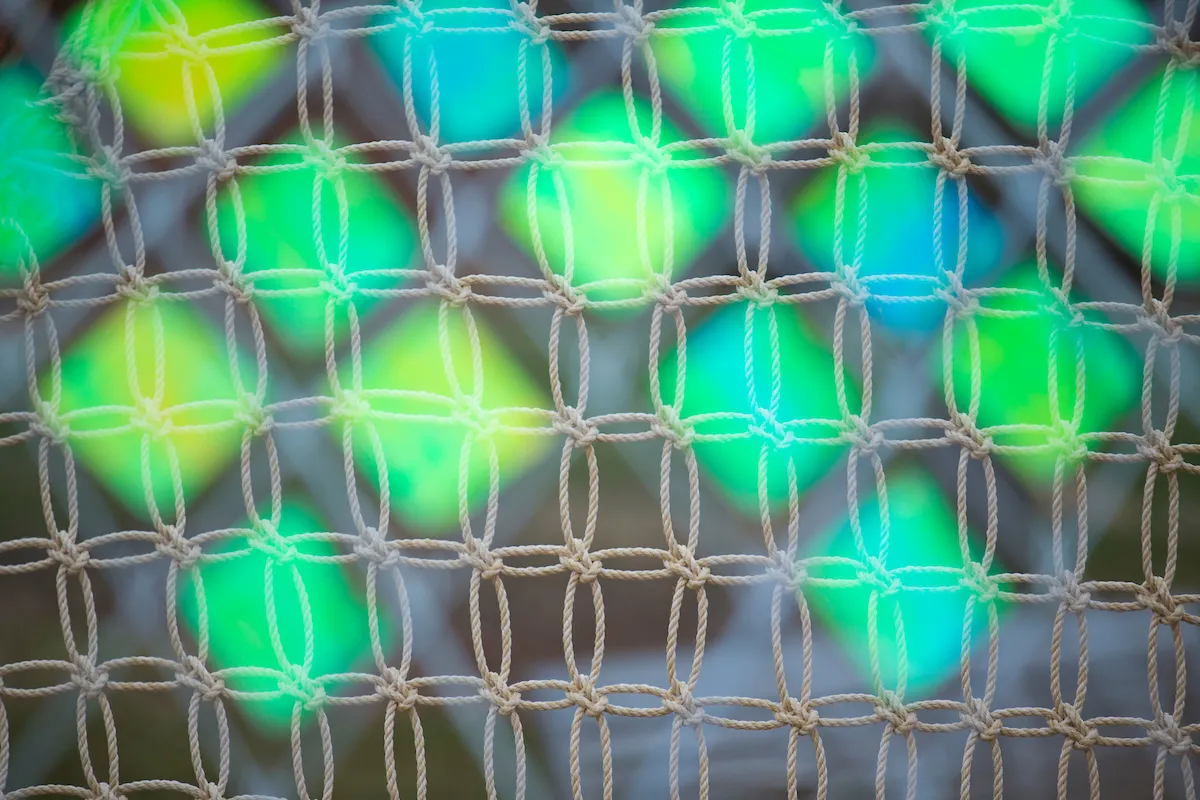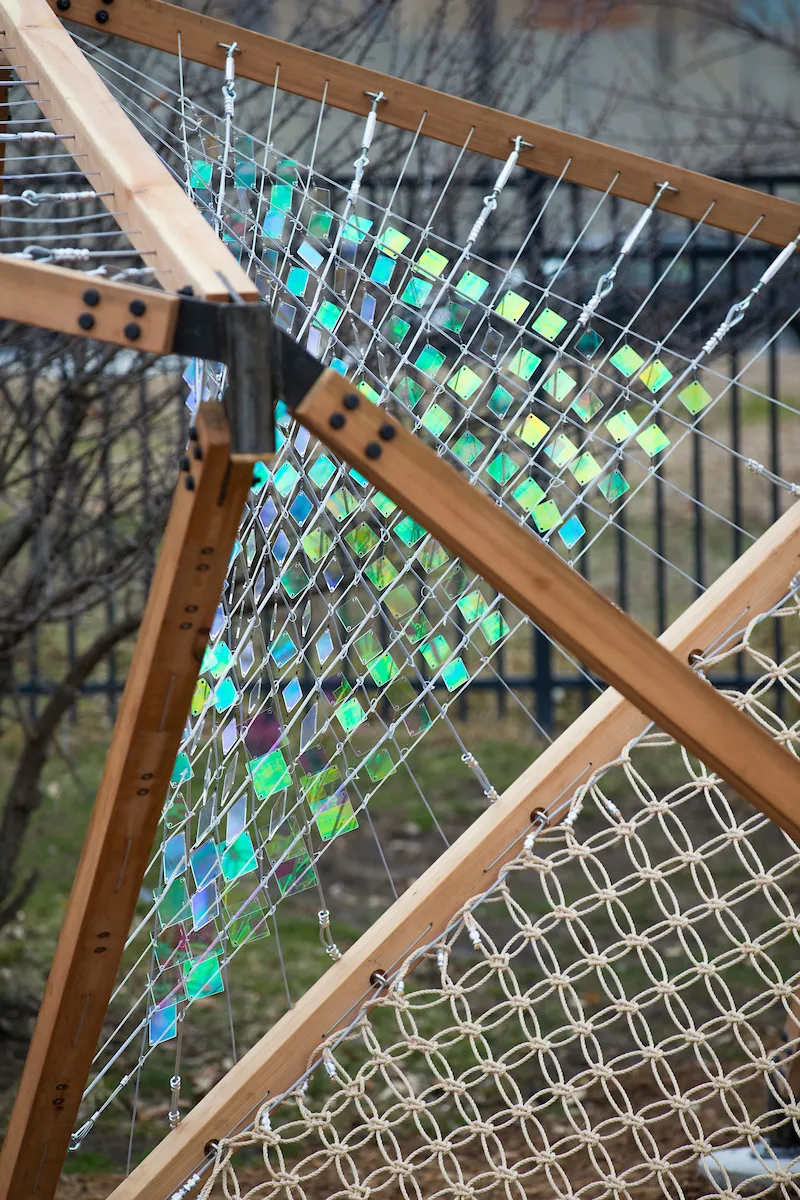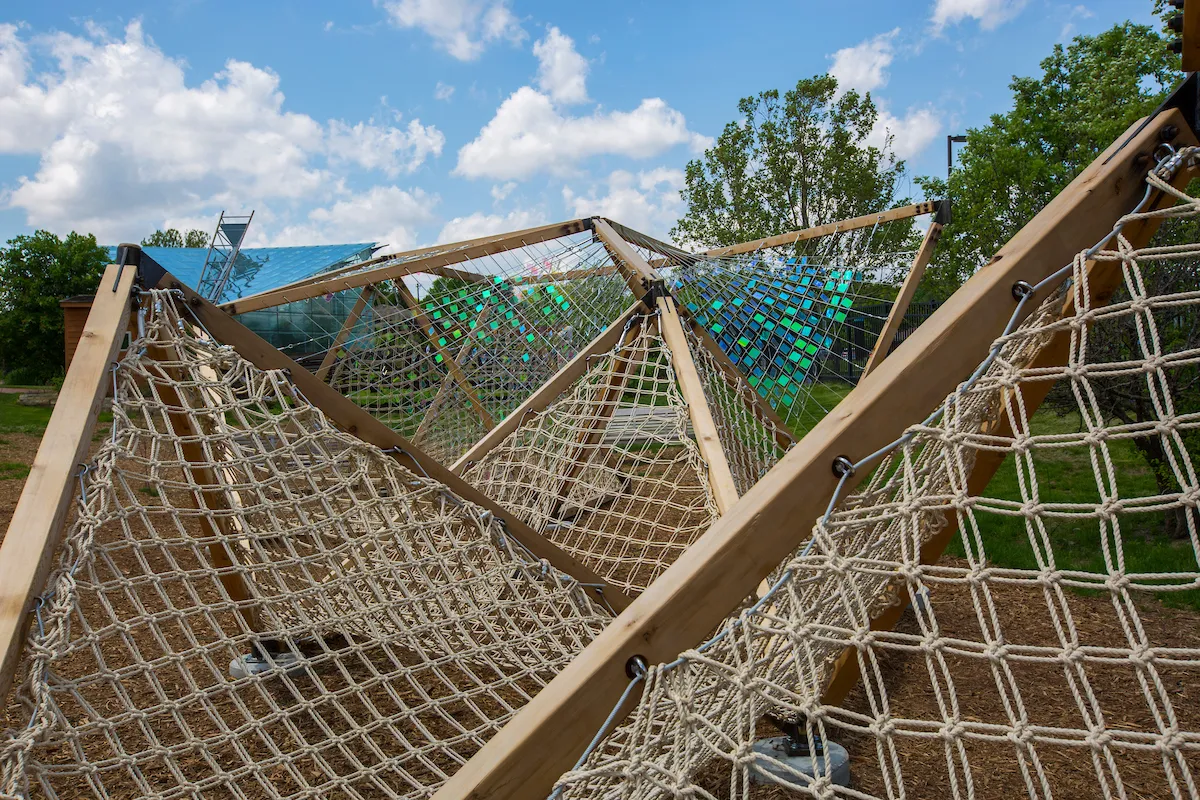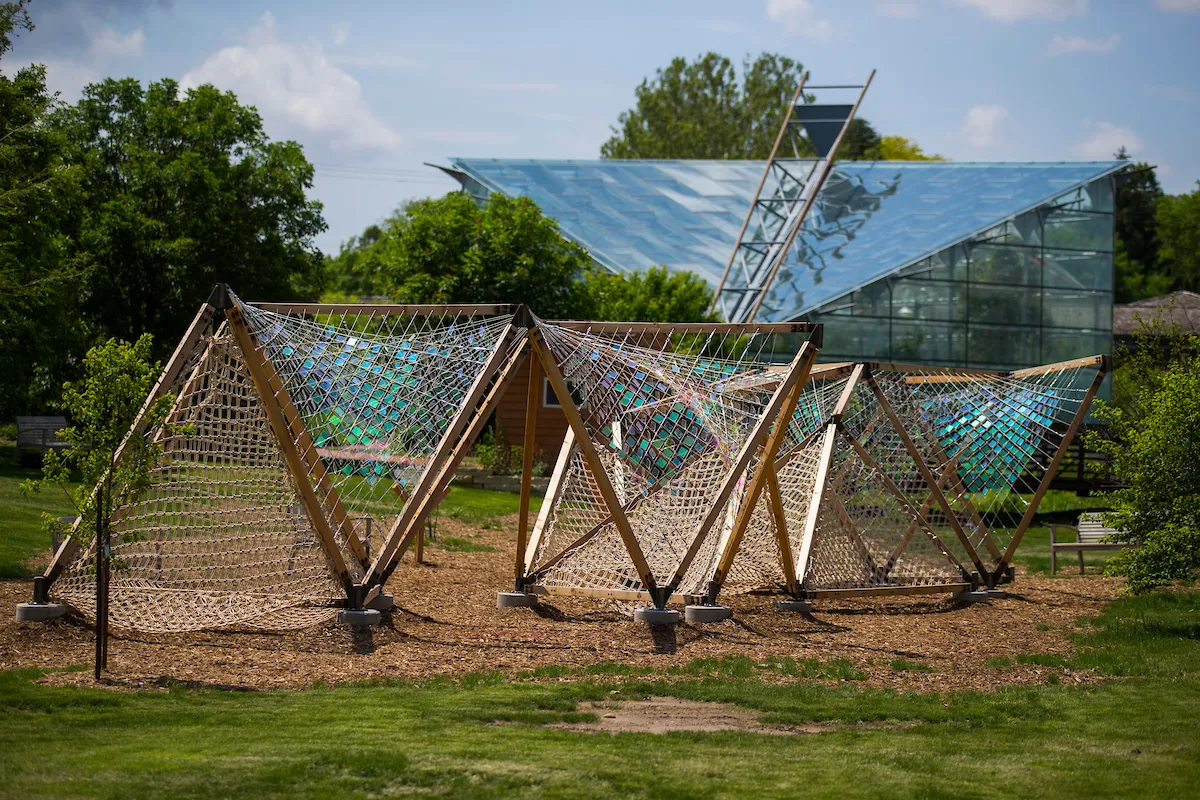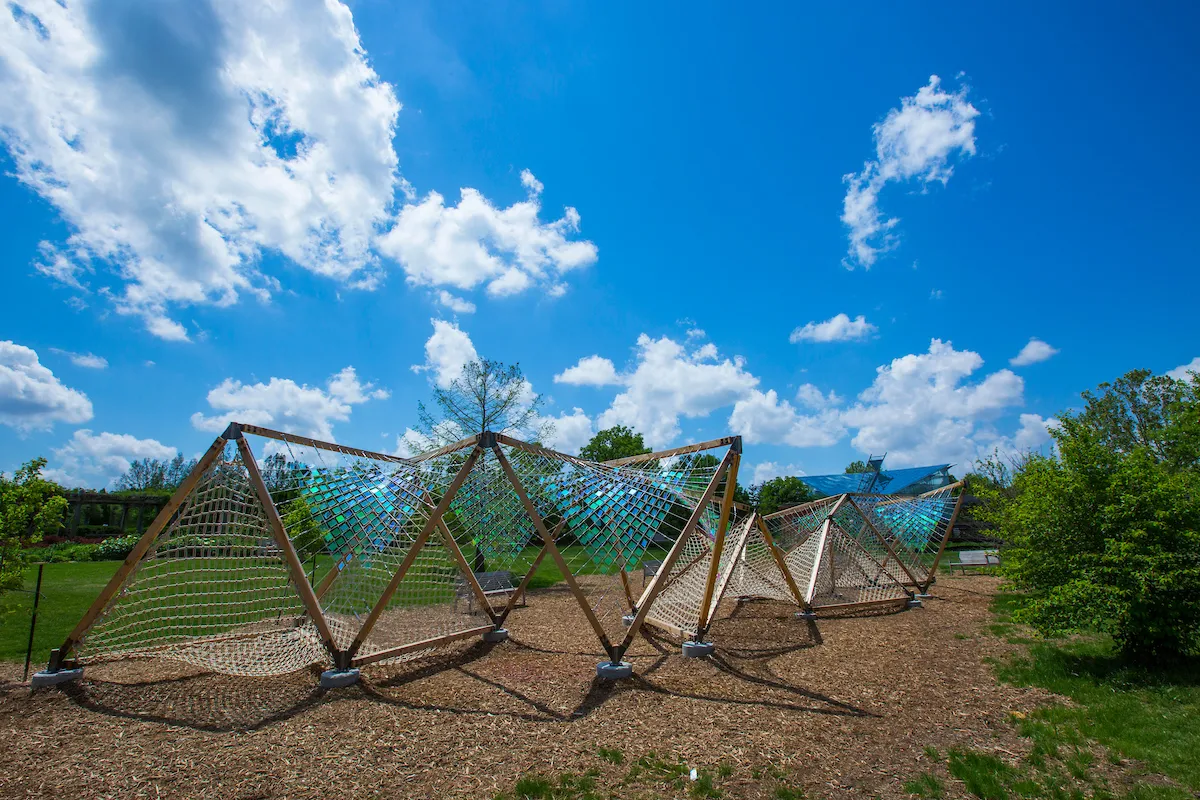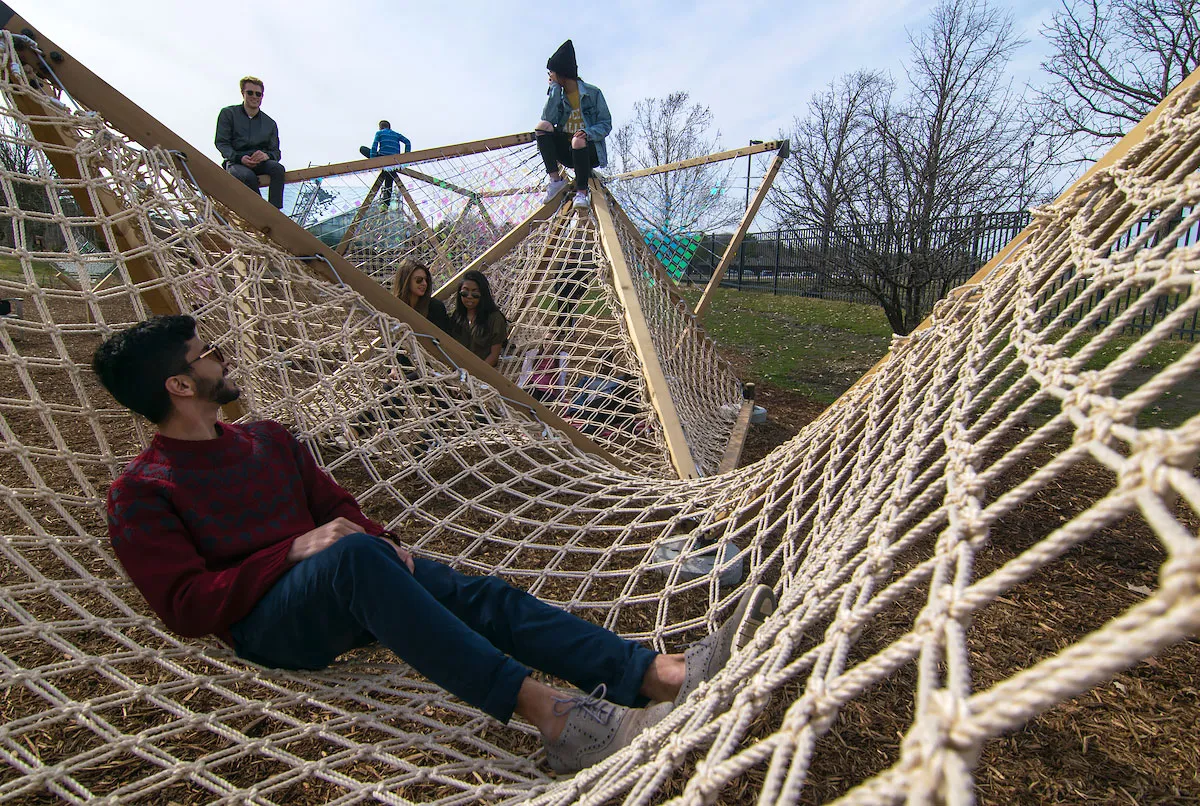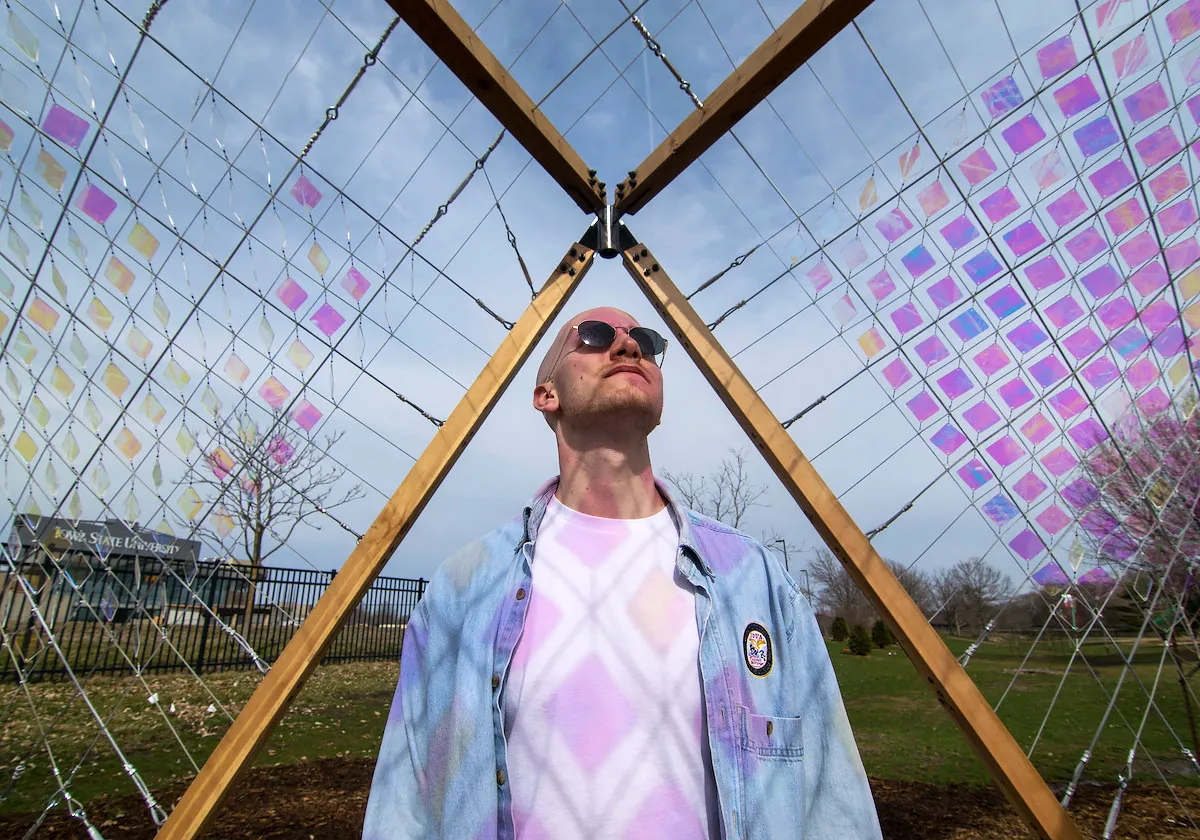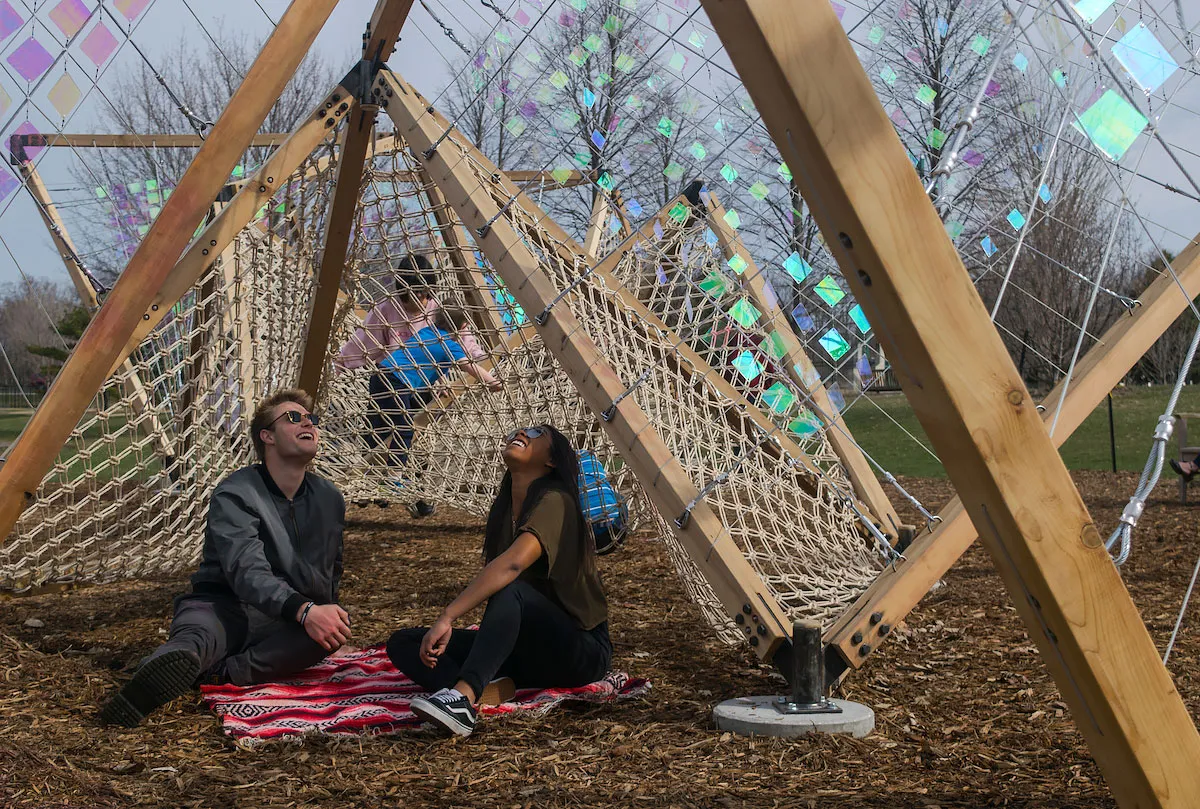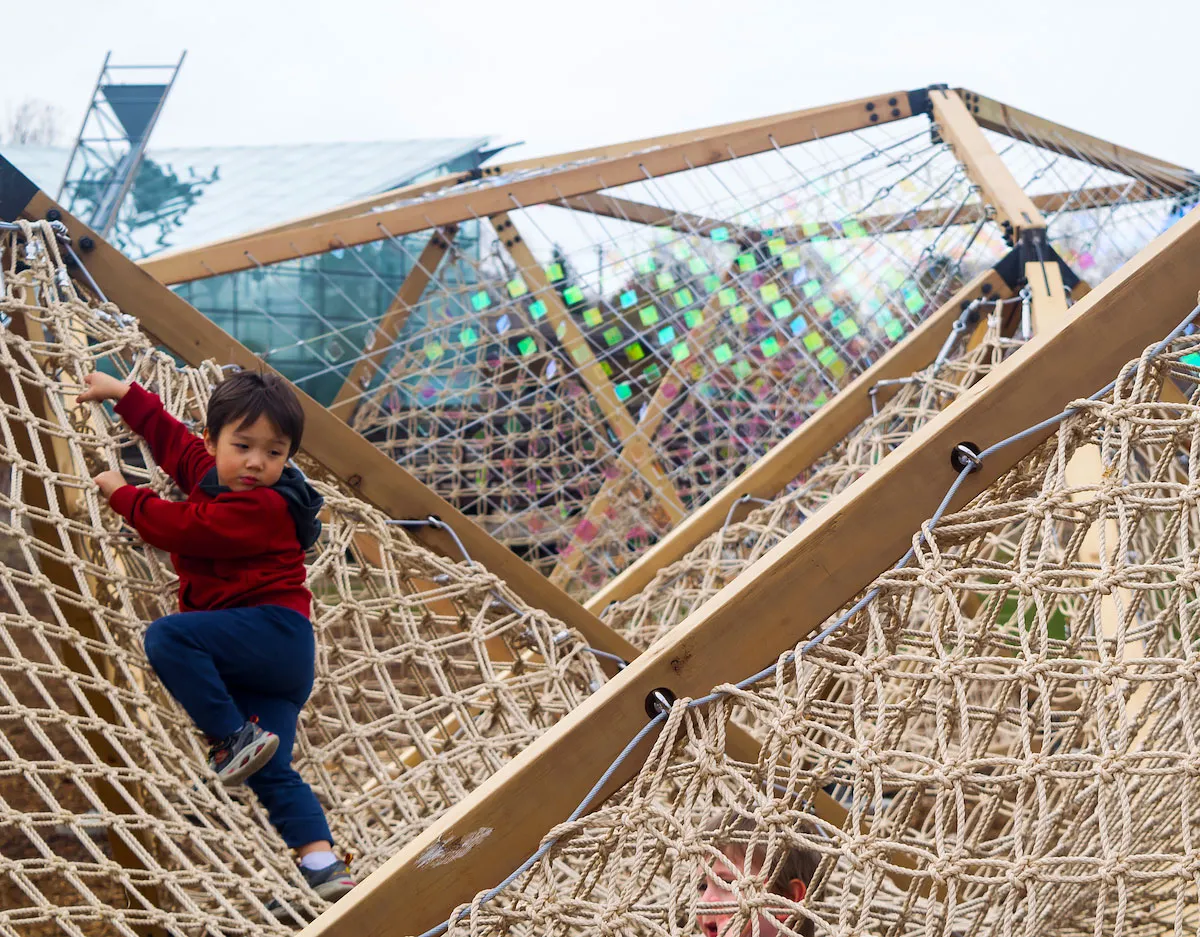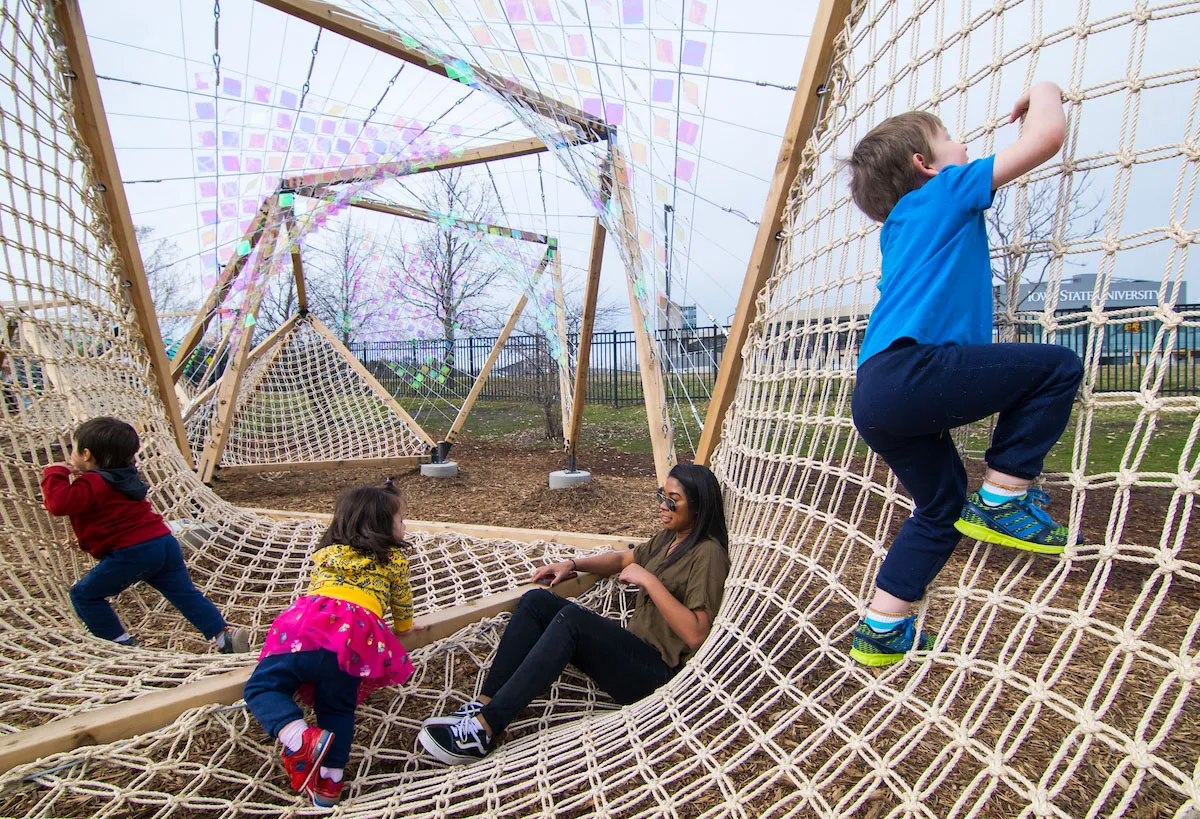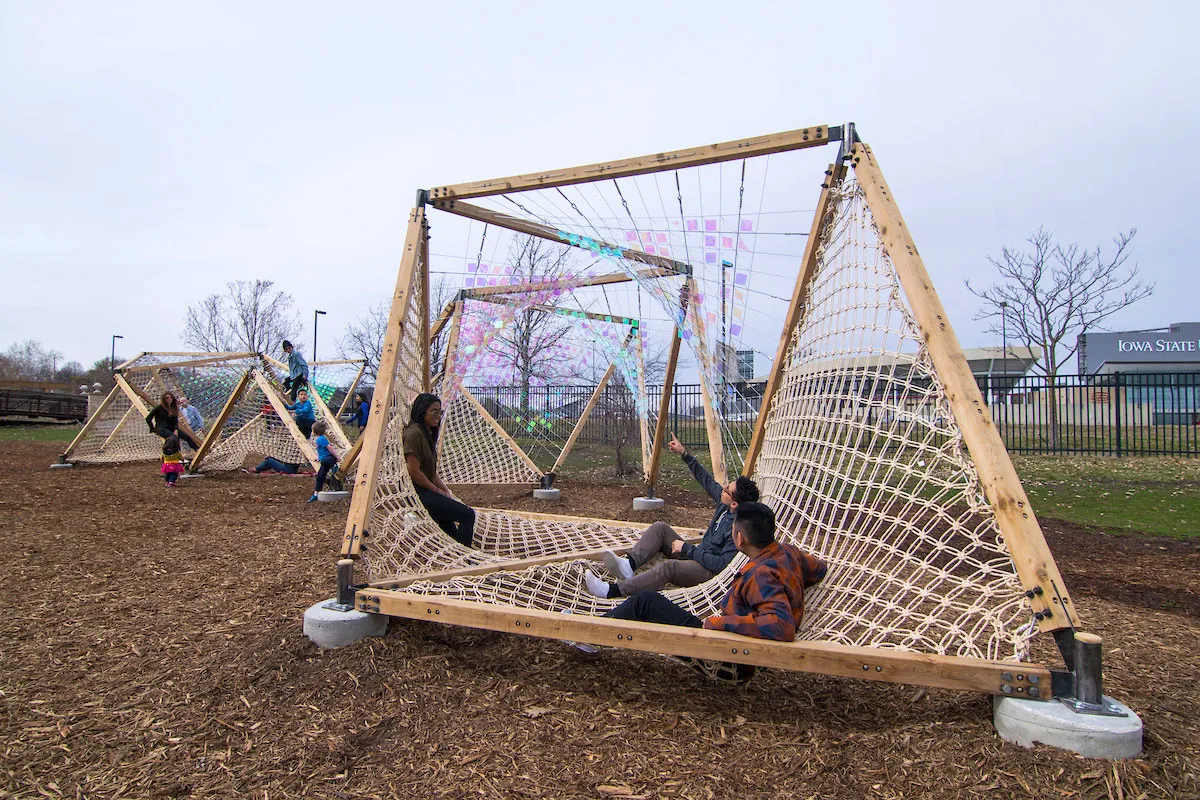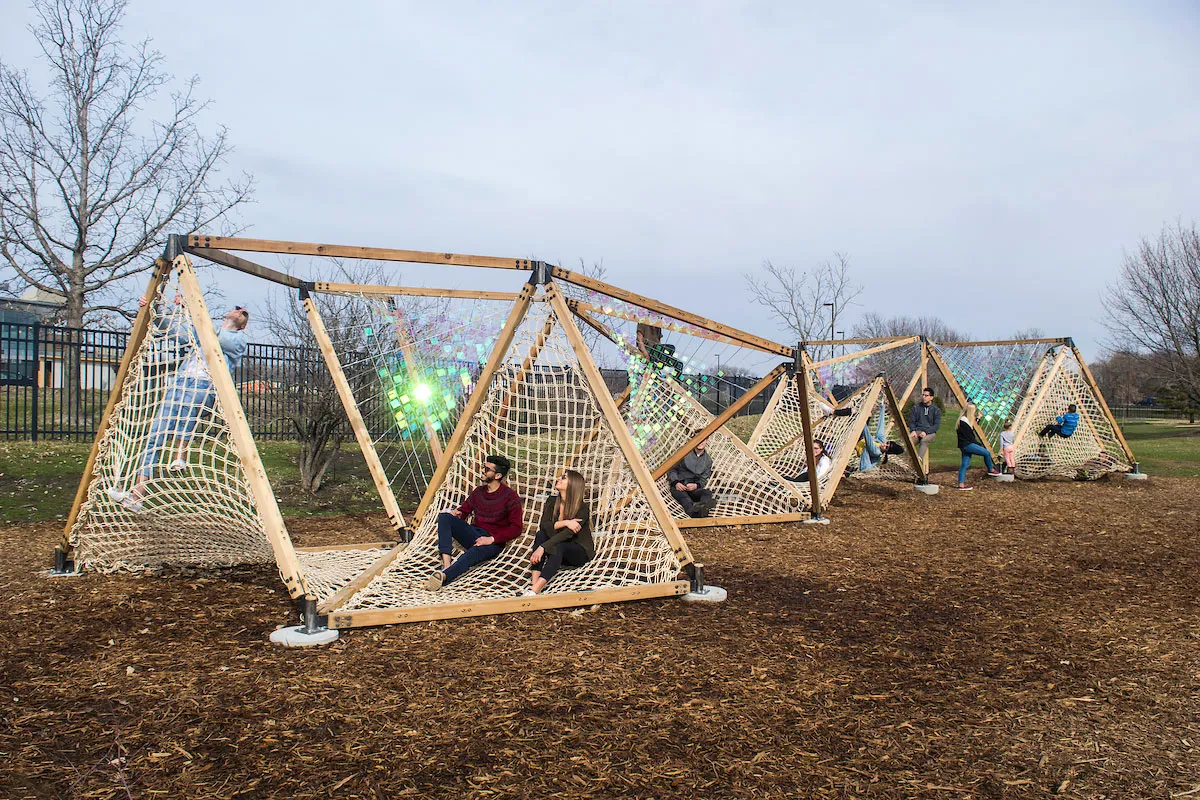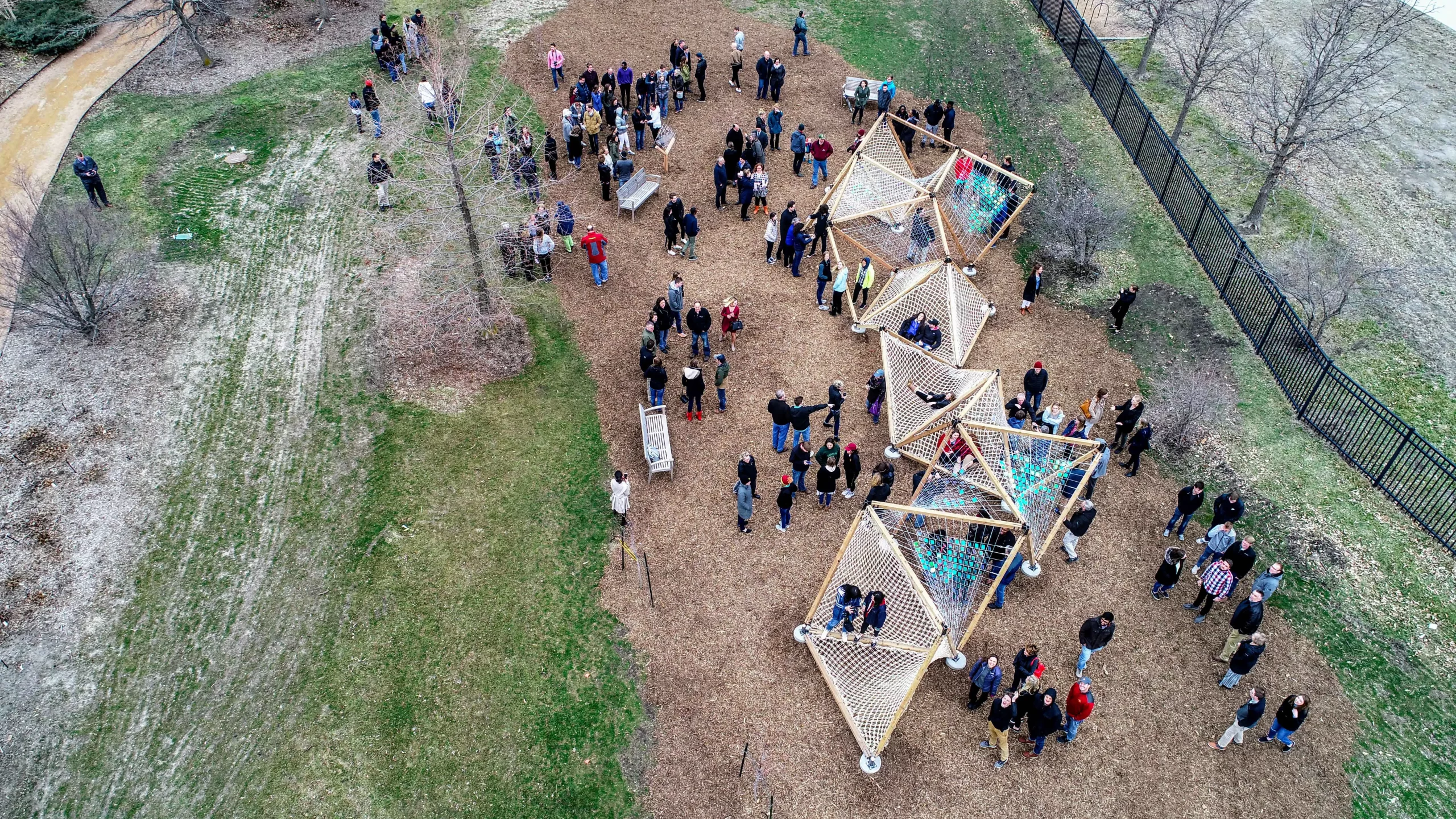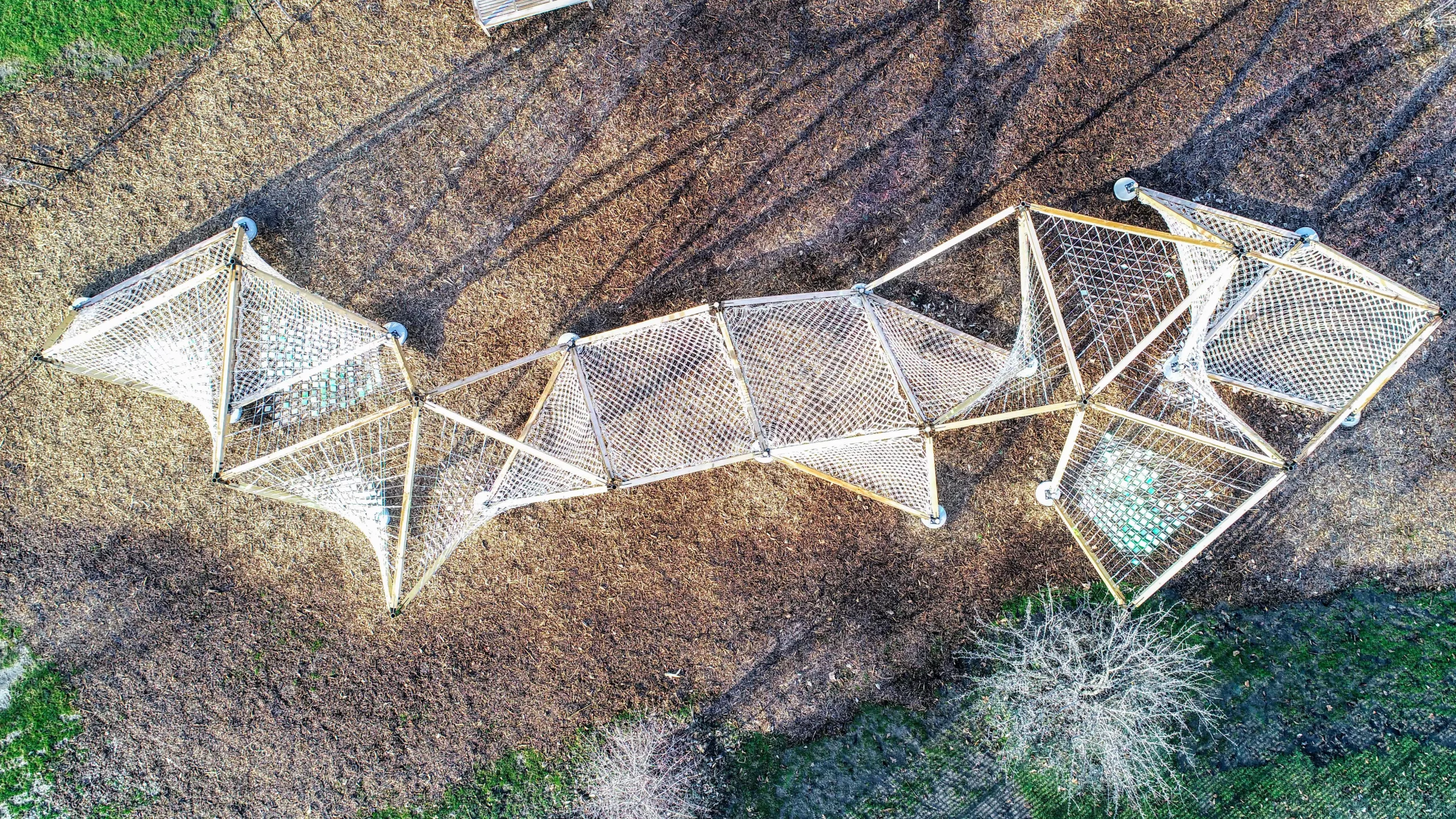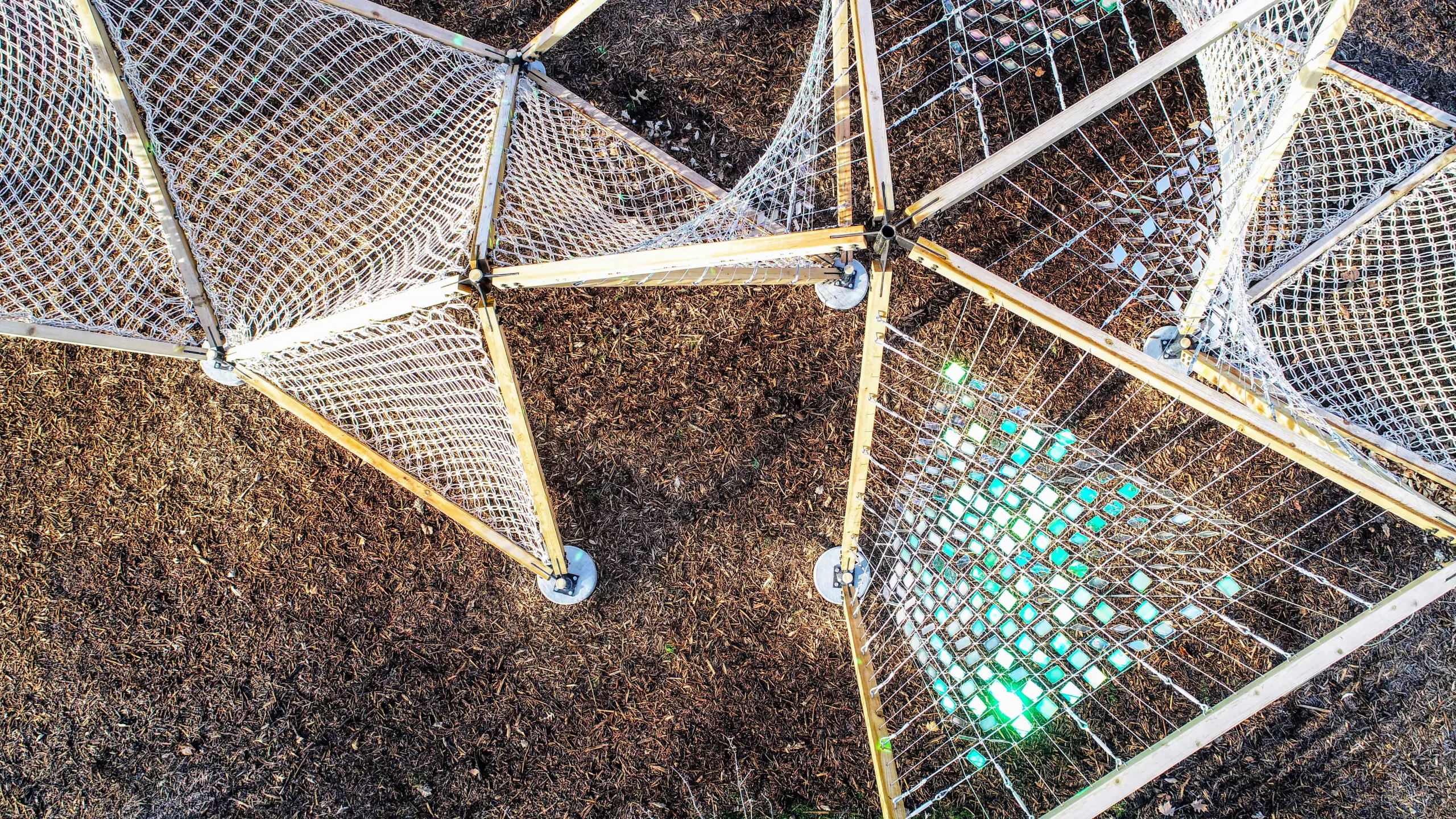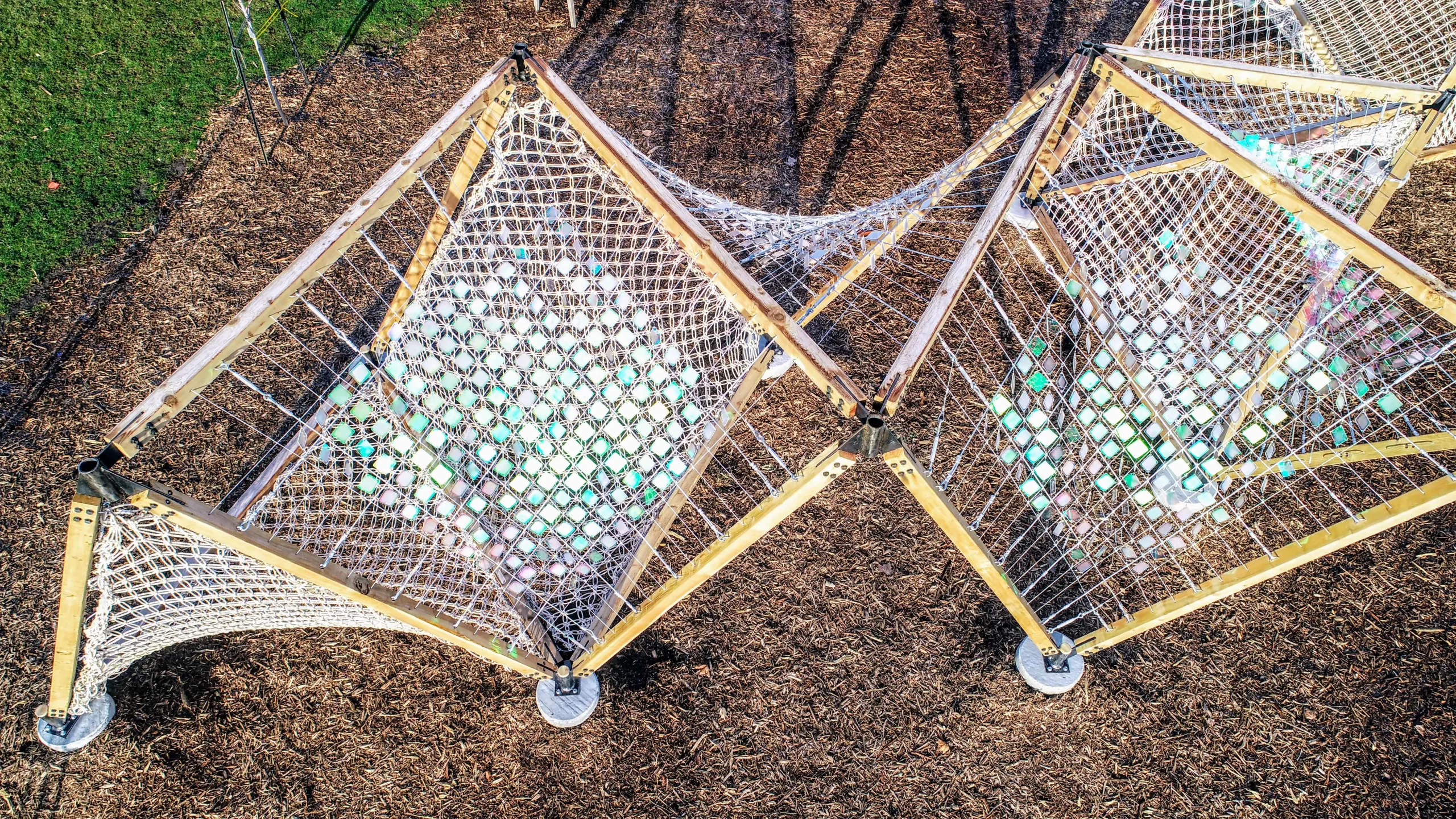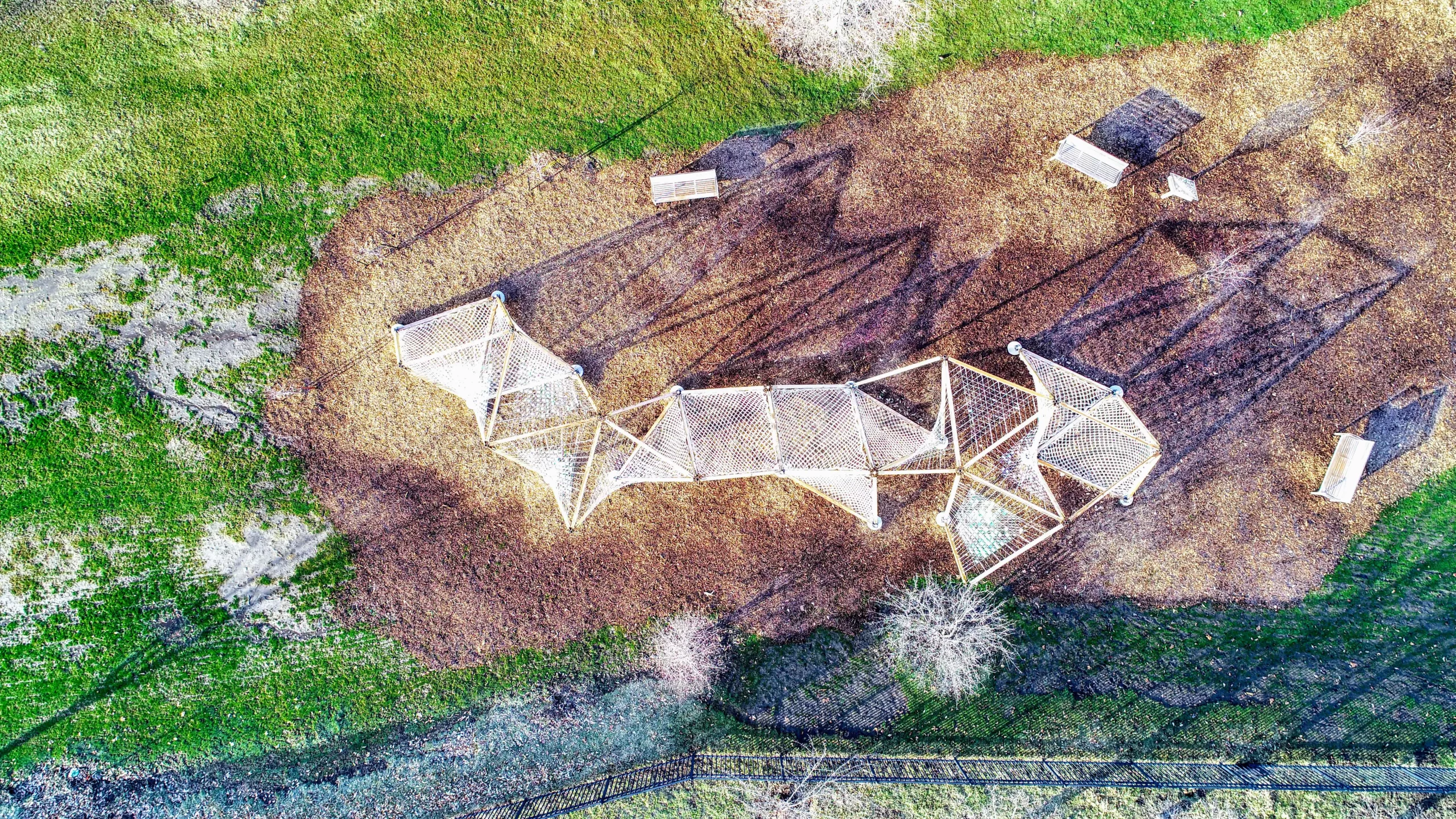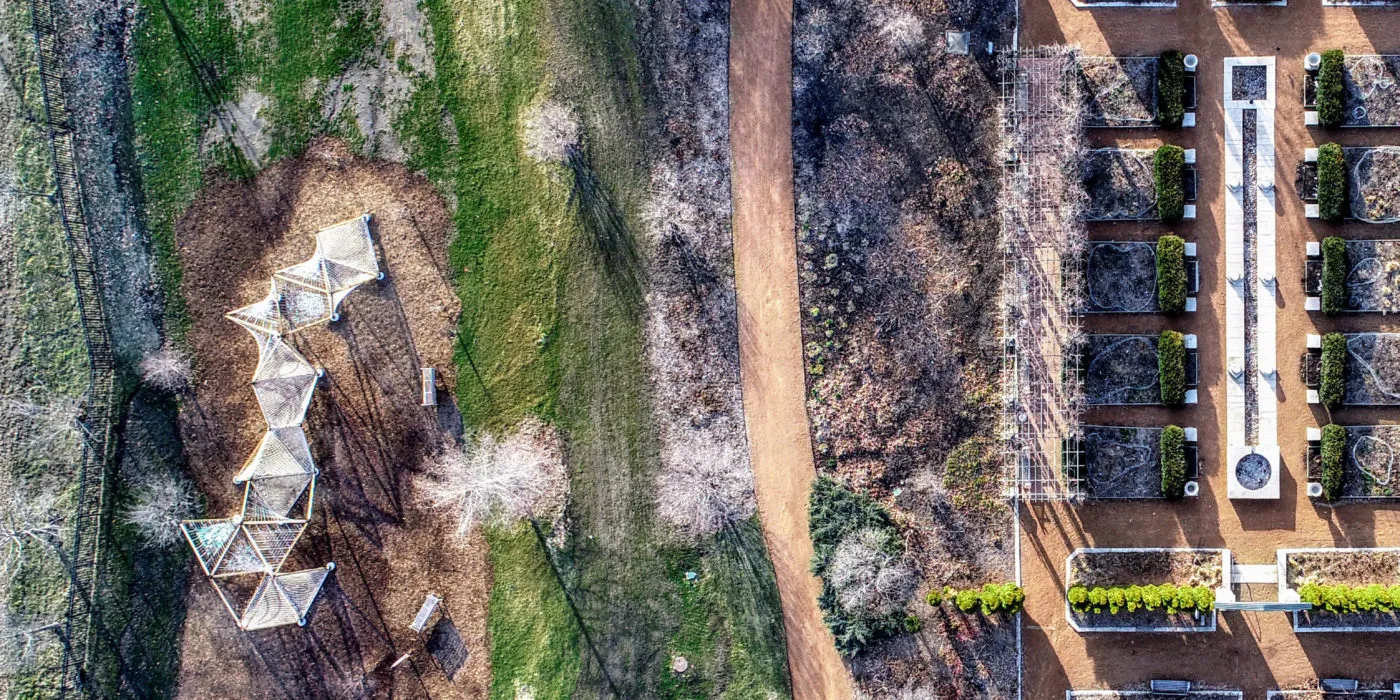PRISMA
Overview
PRISMA, a 1,300sf outdoor structure, was designed, fabricated, and constructed by 77 students at Iowa State University’s architecture studio in collaboration with Reiman Gardens. The project was inspired by natural phenomena on the site and designed as a companion piece to the “Forces of Nature” kinetic art exhibit. Climbing nets and woven hammocks encourage public interaction while suspended iridescent panels spin in the wind, creating a prismatic palette of colors, making it an architectural-scale kinetic sculpture
Details
Title: “PRISMA”
Location: Ames, Iowa
Client: Reiman Gardens, Iowa State University
Completed: April 2018
Size: 1,300 sq.ft.
Medium: Steel, Nominal Lumber, Iridescent Plexiglass, Fabric.
Credits: Iowa State University-College of Design | Class Spring 2018
Faculty: Roman Chikerinets, Reinaldo Correa, Leslie Forehand, Ayo Iyanalu & Nick Senske
Project Narrative
PRISMA is a 1,300sf outdoor structure designed and built by a 77-person second-year architecture studio in collaboration with Reiman Gardens. The project, a companion to the “Forces of Nature” kinetic art exhibition, was designed to reflect the garden’s natural surroundings through the use of tumbling forms inspired by plants, animals, and other natural phenomena. Climbing nets and woven hammocks encourage public interaction and reflection, while the spinning iridescent panels that inspired the project’s name create a prismatic palette of colors in the sun, making PRISMA an architectural-scale kinetic sculpture.
The studio’s pedagogy involved rapid iterations between digital models and physical prototypes, leveraging technology to overcome students’ lack of design, computing, and construction experience. Digital workflows, groupware, and online tutorials were used for coordination, collaboration, and learning. The studio used advanced methods for environmental analysis, form-finding, and full-scale fabrication, bringing these concepts into a shared experience for novice designers.
After client feedback, proposals were remixed and shared with other groups of students to generate new ideas. Kangaroo simulations estimated potential deformations under tensile loads and informed the final weave for each piece. Finite element analysis was used to check major structural elements in preparation for an engineering review. Fabrication and assembly were achieved using a master Rhinoceros model with a version control system, customized Grasshopper scripts, and 3D assembly diagrams and animations.
PRISMA’s design and location were determined through a site analysis that included 3D scans of the gardens, fluid simulations for drainage, virtual camera views, and wind simulations. The final design integrates multiple materials, including concrete foundations, steel connections, cedar timber frames, woven poly-dacron hammocks, and steel cable and acrylic kinetic elements. Despite the scale of the project, PRISMA was fabricated and assembled on site in less than two weeks, highlighting the power of computation to amplify learning and make architecture more accessible.
Select photos by Chris Gannon, Joe Kastner, and Nick Nystrom

